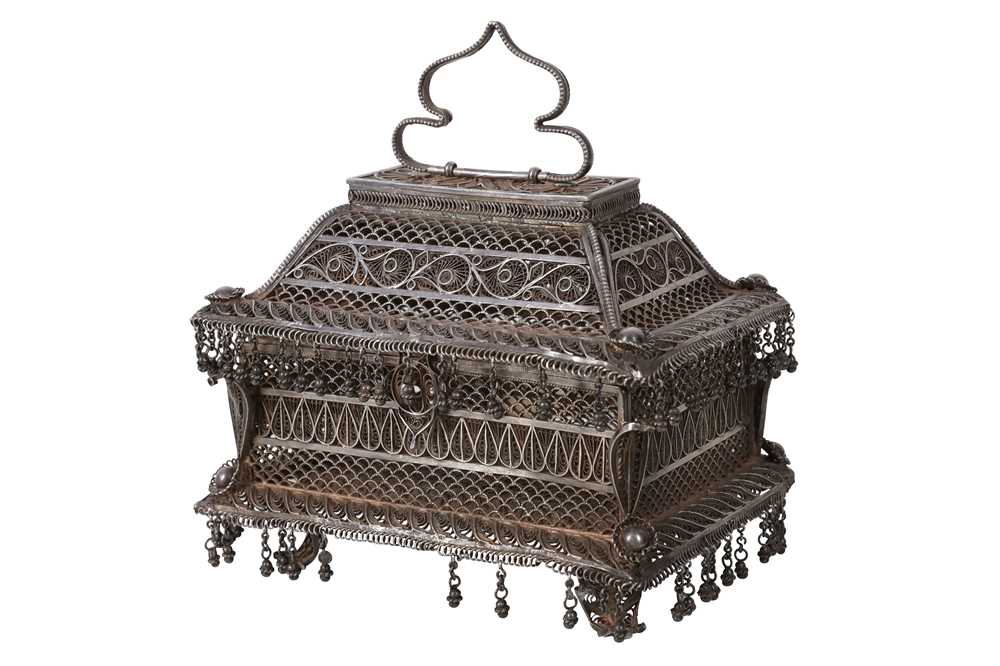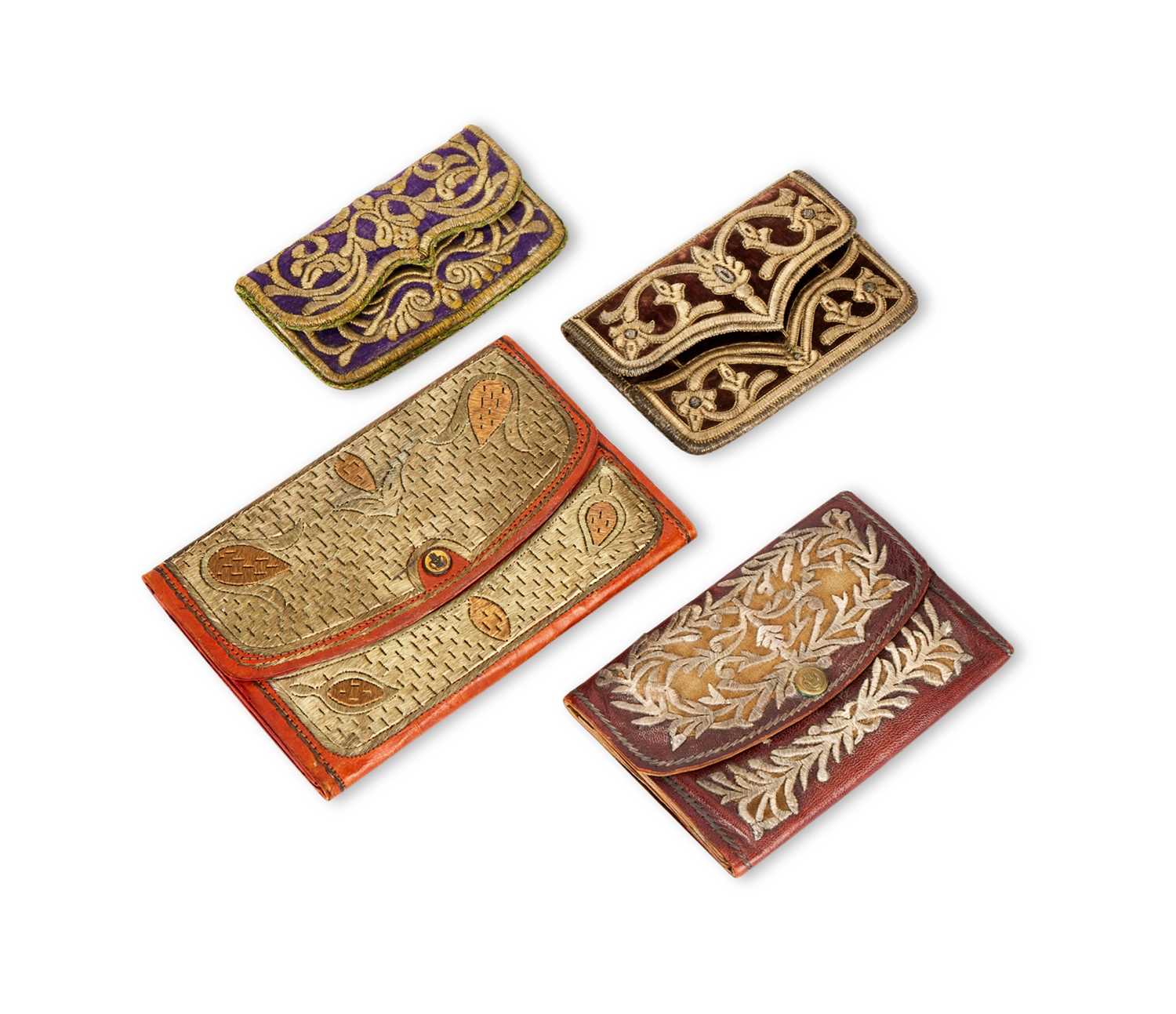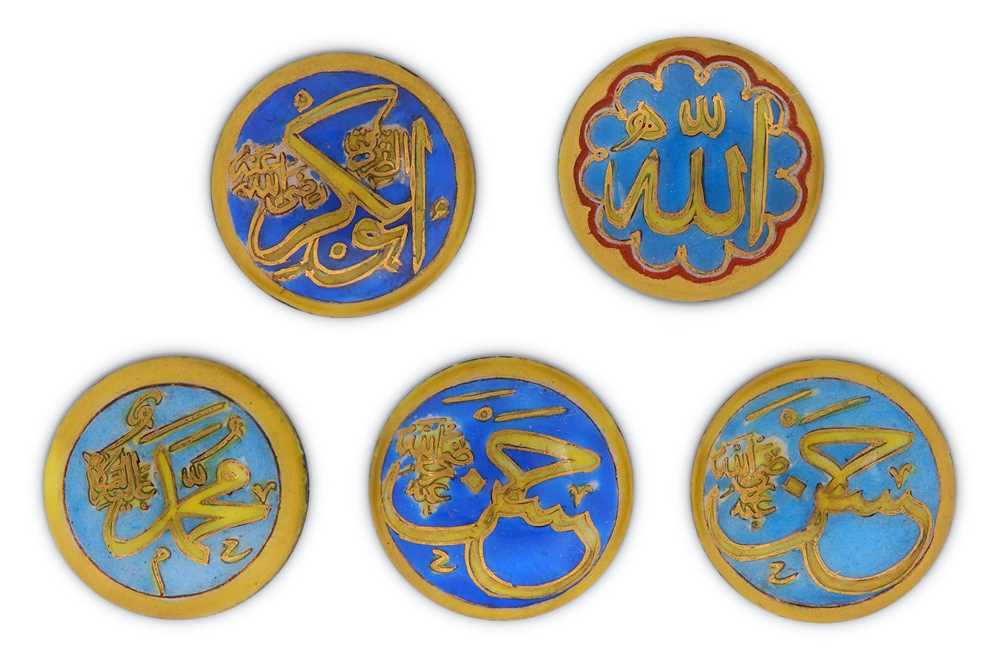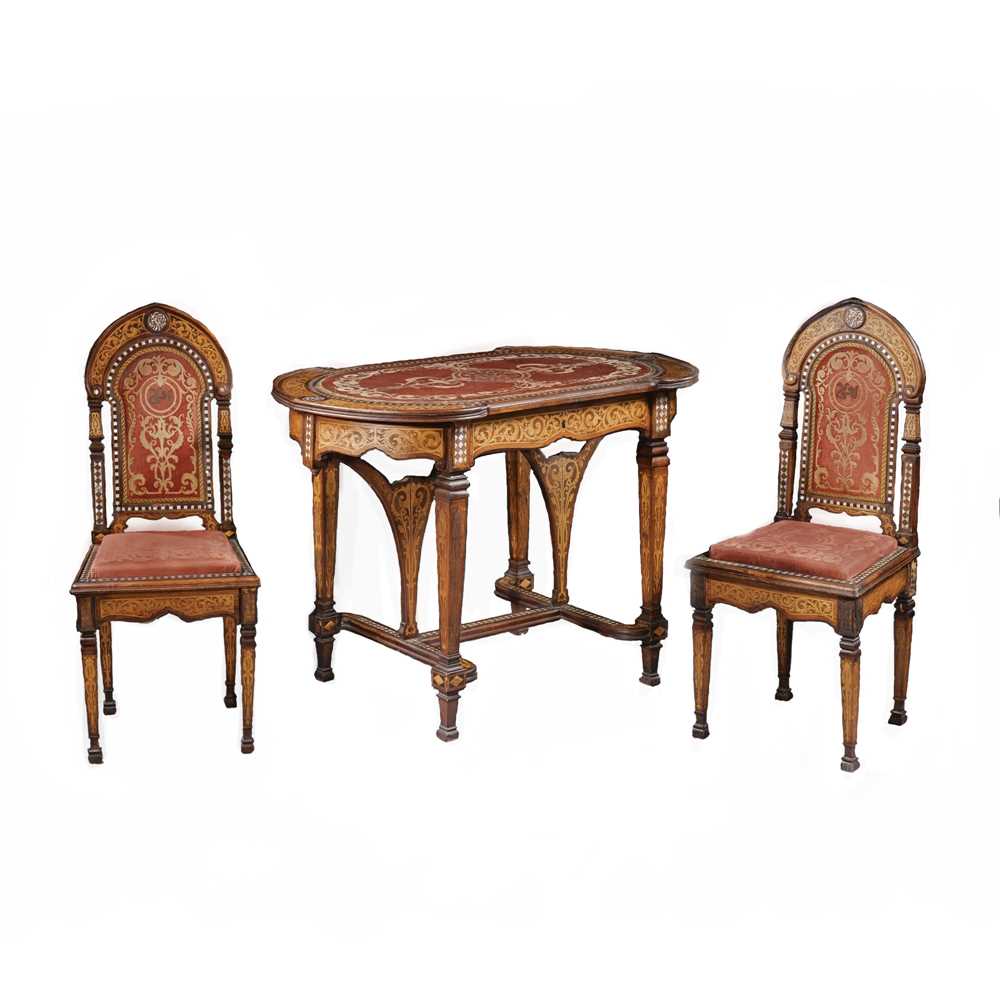FOUR 19TH CENTURY OTTOMAN MEERSCHAUM PIPES three similarly carved with the head of a bearded Turk wearing a fez hat with tassel, the fourth carved with a depiction of Sultan Murat wearing a turban, all of typical shape, made of sepiolite and with amber coloured mouthpiece, one with silver coloured mounts, one with leather case, the largest 19.5cm in length (4) The term Meerschaum comes from the German word for sepiolite or sea foam. The sepiolite was discovered in the Black Sea by Turkish fishermen, and would either have been carved in Ottoman Turkey, or exported to Vienna where it was expertly sculpted. Some of these Meerschaum pipes were carved in Vienna for the Ottoman / Persian market, and returned to the Middle East.
FOUR 19TH CENTURY OTTOMAN MEERSCHAUM PIPES three similarly carved with the head of a bearded Turk wearing a fez hat with tassel, the fourth carved with a depiction of Sultan Murat wearing a turban, all of typical shape, made of sepiolite and with amber coloured mouthpiece, one with silver coloured mounts, one with leather case, the largest 19.5cm in length (4) The term Meerschaum comes from the German word for sepiolite or sea foam. The sepiolite was discovered in the Black Sea by Turkish fishermen, and would either have been carved in Ottoman Turkey, or exported to Vienna where it was expertly sculpted. Some of these Meerschaum pipes were carved in Vienna for the Ottoman / Persian market, and returned to the Middle East.







.jpg)







Try LotSearch and its premium features for 7 days - without any costs!
Be notified automatically about new items in upcoming auctions.
Create an alert